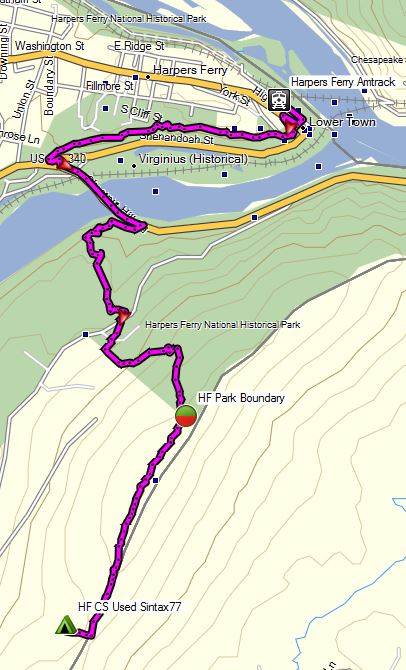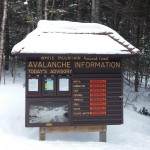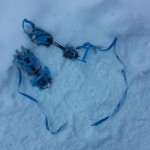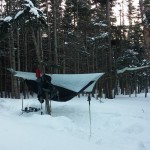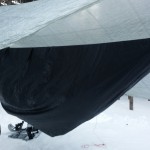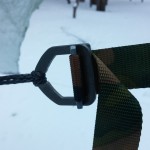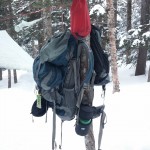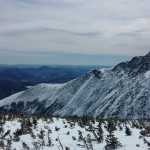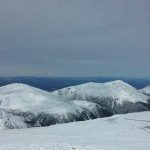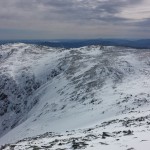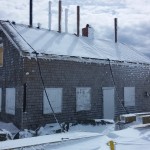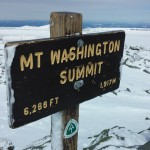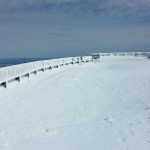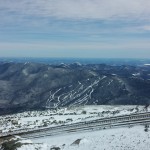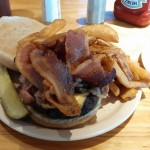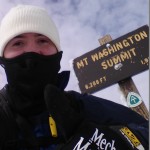A detailed look at my 2017 Winter Ultralight Backpacking Gear List
For a detailed list of my winter backpacking gear, with itemized weights and descriptions, you can download PDF and CSV format copies of this list as well as lists for previous trips / videos my Gear Lists page.
List in PDF Format for viewing and printing.
List in CSV Format for use in your favorite spreadsheet or backpacking software.
Below is a simplified list of the backpacking items shown in the video (without weights or descriptions).
Pack
Backpack – ULA Ohm 2.0
Pack Cover – Dutchware Argon
Stuff Sacks and Storage
Bear Bag Stuff Sack, Water Resistant 8L
Bear Bag Line
Zip-lock Bag – Sandwich
Stuff Sack 4L
Zip-lock Bag – Gallon
Tools
Compass
Lighter – Eddie Bauer
Multi Tool – Tool Logic Card
Carabiner, S-Biner – Large
Carabiner, S-Biner – Mini
Fire Starter, Wet Fire
GPS Unit – Garmin Oregon 650
Cooking & Eating Utensils
Cook Pot – 750ml Titanium
Cookset Stuff sack
Matches – Waterproof
Fire Steel – Light My Fire, Mini
Pot Cozy
Spoon – backup, disposable
Spork – Sea to Summit Alloy
Windscreen – Titanium
Stove – Mini Canister Stove
Paper towels squares and Sea to Summit Soap slivers
Hammock System
Hammock Body – Dutchware Chameleon w/ over cover
Hammock Suspension – Dutchware Dyneema straps with Beetle Buckle
Sleep System
Under Quilt – Hammock Gear Incubator 0
Top Quilt – HG Burrow 0
Shelter
Tarp – Hammock Gear Cuben Hex Tarp
Ground Cloth – Tyvek, long
Tent spike – Titanium
Water Treatment & Storage
Water Filter – Sawyer Squeeze
Sawyer Filter Bag – 64oz Dirty
Water Bottle – 1.5 Ltr, Disposable
Spare water bottle caps.
1 Liter Bottle, Insulated – ‘Forty Below‘
Sawyer Filter Bag – 64oz Clean
Light Sources
Headlamp – Fenix HL21 w/ battery
Spare AA Battery
Flashlight – Preon 2
First Aid & SOS Messenger
First Aid Kit
Spot Messenger
Toiletries
Toilet Paper
Toiletry Kit
Wet Wipes
Hand Sanitizer
Clothing, Secondary & Spare
Jacket – Montbell UL Down Parka
Socks, Wool – Heavy Wgt
Hat, Beanie – Lt Wgt Fleece
Shirt, Long sleeve – Fleece Lt
Long Underwear, Merino
Shirt, short sleeve
Sock Liner, Med Wgt Carhartt
Pants, fleece lined by EMS
Gloves, Work
Clothing Worn
Hat, Beanie – Hvy Wgt
EMS Hard shell Jacket
Fleece, Military – Hvy Wt
Shirt, Long Sleeve -Lt Wgt
Shirt, short sleeve
Pants, Hardshell
Socks, Wool – Med Wgt
Long Underwear, Synthetic
Boots, Winter High Top Garmont GTX
Sock Liner, Med Wgt Carhartt
Gloves, Heavy Winter
Glove Liners, Merino Wool Lt
Face mask / neck gaiter by Seirus Innovation

